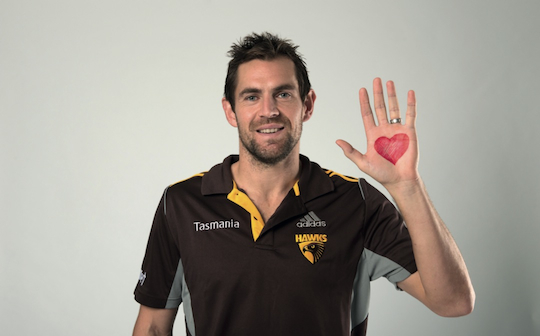How Bupa developed a partnership strategy for shared value
Share
Bupa developed a whole-of-business partnership strategy, model and assessment framework to ensure all investments in sponsorships, research partnerships and community initiatives create positive social and/or health impacts while delivering returns to the business. This case study details the process with Melbourne-based agency, Ellis Jones.
Campaign: Partnership strategy development
Client: Bupa
Agency: Ellis Jones
Background
Bupa cares for over 33 million people across 190 countries. With a breadth of offerings, Bupa’s challenge is to build awareness of its capabilities and services beyond health insurance. In addition to being one of the country’s largest privately operated health insurers, Bupa is also the largest private operator of residential aged care facilities in Australia, and the largest dental practice operator in Australia and New Zealand. Bupa operates 26 Bupa Optical centres, is the exclusive supplier of Visa Medical Services for new migrants to the country and has recently opened up its first GP clinic.
Bupa invests in a range of strategic relationships across its business. The more prominent are managed by a partnership group responsible for partnerships with research, innovation, branding, marketing, corporate responsibility and sustainability objectives. Business units also invest in partnerships relevant to their markets and operations.
Bupa engaged Melbourne-based agency, Ellis Jones, to help facilitate the development of a whole-of-business partnership strategy, model and assessment framework to ensure all investments in sponsorships, research partnerships and community initiatives create positive social and/or health impacts while delivering returns to the business.
Objectives
Bupa has purpose at the centre of its brand: helping people live longer, healthier, happier lives. This purpose is an important differentiator from other brands.
Until 2014, Bupa’s sponsorships were primarily focused on raising brand awareness and its research and social sector partnerships on outcomes that, although altruistic, were sometimes not aligned with the company’s competencies. From 2014, Bupa’s objective was to leverage partnerships to deliver on its purpose while strengthening its business.
In June, an exemplary partnership for Bupa emerged that demonstrated how partnerships are key to achieving the company’s objectives.
The Heart Salute campaign was created to raise awareness about heart disease in women. Heart disease claims the lives of approximately 25 women every day, is the single biggest killer of women in Australia and kills three times more women than breast cancer.
Connecting two existing partners – prominent AFL clubs the Brisbane Lions and the Hawthorn Hawks – to Bupa’s existing relationship with the National Heart Foundation, Bupa was able to significantly raise awareness of heart disease by taking the message about the issue not only to its own customer base but to millions of footy supporters across the country.
As AFL partnerships have historically been skewed towards a male audience, the partnership also provided an opportunity to engage females and males, as women’s health is an issue for both genders.
The Heart Salute campaign leveraged Bupa’s health insurance, aged care, optical and corporate wellness communication channels. The results exceeded objectives, achieving 14 million impressions via social media and television advertising, including more than 297,000 views, with the #heartsalute hashtag shared by 1165 people. The campaign also resulted in high positive brand association and, when asked, two in three AFL club members agreed with the statement ‘Bupa cares about the health of Australia’. In addition, it helped Bupa establish in the minds of Australians that it is a health company with services and products beyond health insurance.
Most importantly, the partnership also resulted in connecting people to Bupa’s health services and resources, providing ways for people to check, monitor and improve heart health.
Heart Salute demonstrates the potential for shared value creation via partnerships. Business impacts include increased brand equity and engagement of existing and new customers with Bupa services. Social impacts include greater awareness of heart-related health issues, and more active management of heart health.
For the Heart Foundation the issue of heart health and its role in reducing heart-related illness reached many more Australians, which should also turn into greater support for its other research and advocacy programs.
The challenge for Bupa was to develop a framework for making all partnerships create social and business value. Project objectives were:
- Define what a partnership is/means to Bupa Australia,
- develop a whole-of-business approach to identifying, assessing, managing and evaluating all partnerships,
- ensure that the company’s purpose of investing in health for societal impact is evident in all partnerships,
- create a system that aggregates and provides visibility over partnerships, ensuring that investment is appropriately allocated across different health conditions and business objectives, and
- provide a compelling argument to the business for change.
Strategy
Bringing the partnership group together, Ellis Jones applied the concept of ‘shared value’ as a basis to identify, assess and manage partnerships that realise purpose and business returns.
Shared value is an approach by which any organisation can create economic returns by developing solutions to social problems. These may be whole of society issues or those more local to a company’s operations and markets.
Research conducted by Bupa confirmed that consumers have high expectations for purpose to be evident in its activities. This echoes the findings of other studies by Nielsen (‘Doing well by doing good’, 2014) and the NYU Stern institute (‘NYU Stern Study shows customers are willing to pay more for socially responsible products’, 2013) that show a persistent and escalating trend towards consumers willing to pay more for socially responsible products.
Execution
Within tight time-frames, the development of a strategic partnership framework ran across one month.
Assessment of strategies, partnerships and impacts was followed by in-depth interviews with key internal stakeholders and members of the partnership strategy group.
A workshop was facilitated with leaders of key business areas. It was an exercise as much in finding the points of connection and overcoming the challenges of language and perspective, as it was a distilling of the company’s purpose when realised in practice.
Results
The project had a number of important immediate business outcomes for Bupa:
- Recognition among departmental leaders of the value each team creates across the business-health impact spectrum,
- a clearer definition of what Bupa seeks in a partnership, and what it brings to any relationship,
- a process for finding, assessing, initiating, managing and evaluating partnerships, and
- a framework to enable assessment of any single partnership in the context of whole-of-business partnership investment and with which to define the range of outcomes expected.
While Bupa had an example of an effective partnership in the Heart Salute campaign, the model created focus for all current and future partnerships on achievement of business and health/social impacts – and that is fundamental for a health business seeking and capitalising on opportunities in a rapidly evolving market and economic context.
From a shared value perspective, partnerships are revealed as lead instruments in achieving social change.
In health partnerships can take the shape of research, advocacy, or service provision.
Indirectly or directly, partnerships provide evidence for Bupa’s role in longer, healthier, happier lives.

















